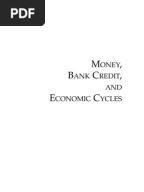John B. Taylor & Michael Woodford Hanbook Of Macroeconomics

Each year the Wall Street Journal asks friends for their favorite books of the year. I chose Thomas Sowell’s history of income distribution in Wealth, Poverty, and Politics and Brian Kilmeade’s history on Thomas Jefferson and the Tripoli Pirates.
AKA John Brian Taylor. Council of Economic Advisers, 1989-91. Birthplace: Yonkers, NY. Gender: Male Race or Ethnicity: White Sexual orientation.
The Man Who Knew, Sebastian Mallaby’s biography of Alan Greenspan, and War by Other Means by Bob Blackwill and Jennifer Harris. This year I chose two amazingly relevant books on U.S. Economic history: John Cogan’s The High Cost of Good Intentions: A History of U.S. Federal Entitlement Programs and Doug Irwin’s Clashing over Commerce: A History of US Trade Policy.My reasons in brief are found in the passage below from the printed December 16 WSJ edition.
In these days of big economic policy changes, history is essential, and if I had room for a third book, it certainly would be another economic history, namely The Political Spectrum: The Tumultuous Liberation of Wireless Technology, from Herbert Hoover to the Smartphone. Ed Nelson sent me a nice note today saying that the past two days (November 20-21) mark “the twenty-fifth anniversary of the Carnegie-Rochester Conference at which you laid out your rule.” I had forgotten about the specific dates, but his note reminds me how much has changed in those 25 years. Robert Buettner Epub To Mobi.
Back then, research on monetary policy rules was indicating that rules needed to be very complex with many variables and many lags. There were serious doubts about the usefulness of the research, and some expressed doubts that the results would ever be applied in practice.
I had been conducting research at Stanford in the 1980s with a number of graduate students including Volker Wieland and John Williams. So Allan Meltzer (who organized the Conference Series with Karl Brunner) called me and requested that I present a paper on the subject at the November 1992 conference. The question was: Could we design a simple practical policy rule that was consistent with our research? The answer turned out to be yes, with the interest rate—the federal funds rate—rather than the money supply or the monetary base as the instrument. The Fed still wasn’t talking publicly about its settings for the federal funds rate, so there was criticism of that design. However, several discussions with Alan Greenspan, who was then Chair of the Fed, gave me a degree of confidence that this approach was workable. Technicolor Keygen Torrent here.